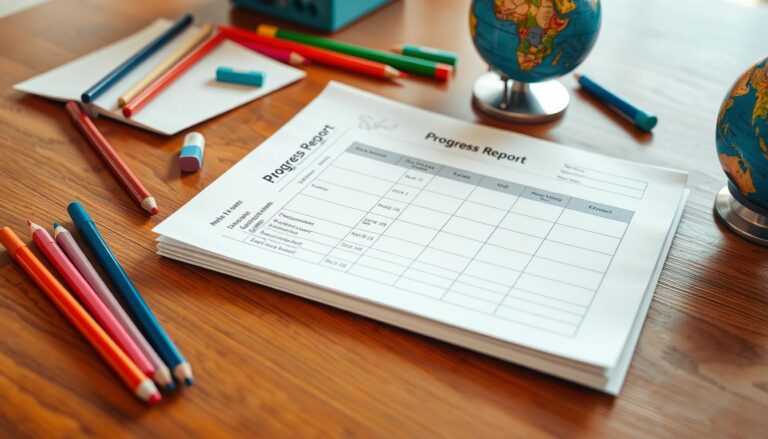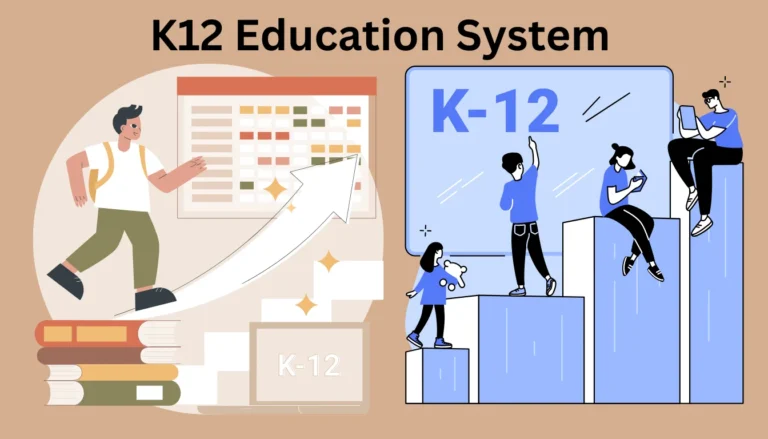Shape Recognition Games and Activities
Did you know that every object around us is made up of basic forms? From the circular wheels on a car to the rectangular windows in your home, shapes are everywhere. Recognizing these patterns is not just fun but also a critical skill for early learning.
For parents in India, helping your child identify shapes can boost their problem-solving and spatial recognition abilities. These skills are essential for math, reading, and even art. Simple activities like using colored paper or household items can make learning engaging and effective.
Our guide explores interactive games and creative crafts to make shape recognition a joyful experience. Whether it’s tracing a circle or hunting for triangles outdoors, these activities are designed to build confidence and curiosity in your child. Discover more about preschool learning to support your child’s development.
Introduction to the World of Shapes
From the moment a child begins to explore the world, shapes become their first visual language. These basic forms are more than just lines and curves—they are the foundation of how children understand their environment. Recognizing shapes is a skill that starts as early as 18 months and grows with every new experience.
Why Shapes Are Essential for Early Learning
Shapes help children organize visual information and distinguish between objects. This skill is crucial for understanding more complex concepts like letters, numbers, and patterns. For example, identifying a circle or square improves observation and categorization abilities.
Every shape a child encounters reinforces core skills like spatial reasoning and problem-solving. These abilities are essential for math, science, and even art. Shapes also boost vocabulary as children learn to name and describe what they see.
The Role of Shapes in Child Development
Shapes are everywhere—from household items to playground equipment. This makes learning shapes a practical, ongoing process. Early exposure to shapes supports not only math skills but also reading comprehension. For instance, understanding shapes helps children differentiate between similar-looking letters like “b” and “d.”
- Shapes lay the foundation for understanding numbers and patterns.
- They enhance spatial awareness and critical thinking.
- Shape recognition builds confidence and curiosity in kids.
This section sets the stage for the fun and engaging activities we’ll explore next. These games and crafts will make learning shapes a joyful experience for your child.
Engaging Games for Teaching Shapes Toddlers
Games and activities are a fantastic way to introduce basic forms to kids. These interactive methods not only make learning fun but also help build essential skills like problem-solving and fine motor abilities. Whether it’s matching puzzles or creating crafts, these activities are designed to spark curiosity and confidence in your child.
Interactive Shape Puzzles and Matching Activities
Interactive puzzles are excellent for fostering problem-solving skills. For example, using popsicle sticks with hook-and-loop dots, kids can match forms like circles, triangles, and squares. This hands-on approach helps them recognize patterns and understand how different objects relate to each other.
Matching activities can also include physical puzzles or simple paper cutouts. These games encourage kids to identify and sort forms, boosting their spatial awareness. As your child’s skills grow, you can introduce more advanced sets to keep them challenged and engaged.
Paper-Based Shape Books and Custom Crafts
Creating a paper-based book is a creative way to reinforce learning. Using colored paper and kid-safe scissors, you can help your child design a circle book or other forms. This activity not only teaches basic forms but also enhances fine motor skills and creativity.
Custom crafts, like sorting and naming forms, are another great option. For instance, kids can use paper to create a set of forms and then arrange them into patterns. These projects make learning tangible and fun, while also building your child’s confidence in their abilities.
- Interactive puzzles improve problem-solving and pattern recognition.
- Matching activities with tangible objects enhance spatial awareness.
- Paper-based crafts encourage creativity and fine motor skills.
- Advanced activity sets keep kids challenged as they grow.
Dynamic Outdoor and Indoor Shape Hunts
Exploring shapes can be an adventure both indoors and outdoors, making learning a hands-on experience. These activities not only reinforce shape recognition but also encourage physical movement and creativity. Whether it’s a sunny day outside or a cozy afternoon indoors, there’s always a way to turn play into a learning opportunity.
Sidewalk Chalk Mazes and Floor Tape Containment
Sidewalk chalk mazes are a fantastic way to blend fun and learning. Use chalk to draw different shapes like circles, squares, and rectangles on the ground. Encourage your kid to step only on specific forms, such as hopping on circles or walking along squares. This activity enhances spatial awareness and coordination.
Indoors, painter’s tape can create shape “containers” on the floor. Ask your child to sort household objects like plates or books into these containers based on their form. For example, a round plate belongs in the circle container. This simple yet effective activity reinforces shape identification and categorization skills.
Treasure Hunts and Sorting Household Objects
Treasure hunts are an exciting way to engage kids in shape recognition. Create a map with shapes as landmarks, guiding your child to find hidden objects. For instance, a triangle could mark the spot where a small toy is hidden. This activity combines problem-solving with physical movement, making it both educational and entertaining.
During these hunts, ask thoughtful questions like, “Why does this object belong in the rectangle group?” This reinforces learning and encourages critical thinking. These dynamic hunts balance physical activity with cognitive development, turning everyday play into a meaningful learning experience.
Creative Arts and Craft Activities with Shapes
Combining creativity with learning, arts and crafts make shape recognition fun and engaging. These projects not only help kids identify basic forms but also enhance their fine motor skills and artistic expression. From colorful collages to DIY sun catchers, these activities turn everyday materials into meaningful learning tools.
Collage, Painting, and DIY Sun Catchers
Creating collages is a simple yet effective way to reinforce shape recognition. Start by cutting out basic forms like circles and squares from colored paper. Encourage your kid to glue these pieces together to build a scene, such as a house with a triangular roof. This activity boosts creativity while teaching the names of shapes.
Painting with foam blocks is another tactile activity. Dip the blocks in paint and press them onto paper to create shape outlines. This helps kids understand how different pressures affect the print, adding a sensory element to the learning process.
DIY sun catchers are a hit with kids. Use foam shapes and contact paper to create colorful designs. As your child arranges the forms, they’ll naturally learn their names and attributes. Hang the finished sun catchers near a window to add a vibrant touch to your home.
Popsicle Stick and Cardboard Shape Creations
Popsicle sticks are versatile tools for crafting shapes. Use them to create puzzles or 3-D models that kids can assemble and disassemble. This hands-on activity encourages problem-solving and spatial awareness. For example, arrange sticks to form a square or triangle, then challenge your kid to replicate the design.
Cardboard is another excellent material for shape projects. Cut out forms like circles and squares, then let your child decorate them with markers or paint. These creations can be used for sorting games or as part of a larger art project. The tactile nature of cardboard helps reinforce learning through touch.
These creative activities not only teach basic forms but also foster fine motor skills and coordination. By exploring different mediums, kids develop a deeper understanding of shapes while expressing their artistic side. Turn your living space into a creative studio where learning and fun go hand in hand.
Shape Recognition Through Movement and Play
Movement and play are powerful tools for helping kids understand spatial relationships. Physical activities turn abstract concepts into tangible experiences, making learning both fun and effective. By incorporating movement into daily routines, we can enhance their cognitive and motor skills while keeping them engaged.
Body Movements and Dance to Form Shapes
Dance routines are a creative way to introduce shape recognition. Kids can raise their arms to form a star or bend their bodies to mimic a triangle. These activities make abstract ideas concrete through physical expression. Movement-based play also improves coordination and spatial awareness.
Simple exercises at home can reinforce these concepts. For example, forming a circle with joined hands or stretching limbs to create a rectangle are easy yet effective activities. These exercises encourage kids to think about how their bodies can represent different forms.
Integrating Movement into Daily Routines
Using clear, descriptive language during these activities is key. When guiding a child, say, “Stretch your arms wide to make a square.” This reinforces the name and attributes of each shape. Movement-based learning also offers a playful break from sedentary tasks, keeping the experience dynamic and engaging.
Parents can join in to make these activities more enjoyable. For instance, dancing together to form shapes strengthens bonding and shared learning. Adjust movements based on available space and the child’s energy levels to ensure a positive experience.
| Activity | Description | Benefits |
|---|---|---|
| Dance Routines | Kids mimic shapes through body movements like raising arms or bending. | Improves coordination and spatial awareness. |
| Forming Shapes | Use limbs to create forms like circles or rectangles. | Reinforces shape recognition and motor skills. |
| Call-and-Response | Parents guide kids to form shapes with descriptive instructions. | Enhances listening and cognitive understanding. |
These activities not only make learning fun but also build essential skills. For more ideas on movement-based lessons, explore our resources. By integrating movement into play, we create a holistic learning experience that supports both physical and cognitive development.
Integrating Shapes into Everyday Learning at Home
Everyday moments at home can turn into valuable learning opportunities for kids. By incorporating shape recognition into daily routines, we can make learning both fun and practical. Activities like cooking and organizing can reinforce these skills naturally.
Culinary Projects and Pizza-Making Activities
Cooking is a fantastic way to introduce basic shapes to your child. For example, cutting cheese or vegetables into circles, triangles, or squares turns meal prep into a learning activity. This hands-on approach engages their senses and makes abstract concepts tangible.
Pizza-making is a favorite activity that combines creativity with learning. Assign each topping a specific shape and invite your kid to place them correctly. This not only reinforces shape recognition but also encourages fine motor skills and attention to detail.
- Use cookie cutters to create fun shapes from dough or ingredients.
- Sort ingredients by shape, turning the process into an informal math lesson.
- Discuss the properties of each shape while cooking, such as sides and angles.
These activities offer a sensory experience, combining taste and sight with learning. By engaging your child in the kitchen, you connect abstract geometric concepts to real-world applications. This makes learning shapes an everyday event rather than a separate task.
Encourage experimentation and creativity. Celebrate every small success as your child gains confidence. These integrated activities not only teach shapes but also foster a love for learning in a practical, enjoyable way.
Conclusion
Recognizing basic forms is a vital skill that sets the stage for your child’s academic and creative growth. Through interactive games, creative arts, and movement-based play, kids can develop essential abilities like problem-solving and spatial awareness. These activities make learning engaging and practical, seamlessly blending into daily routines.
By integrating shape recognition into everyday moments, parents can foster confidence and curiosity in their child. Whether it’s through outdoor hunts or indoor crafts, these methods turn play into meaningful learning experiences. Every small step contributes to building a strong foundation for future success.
We encourage you to explore these ideas and share your experiences with our community. Together, we can create a supportive environment where learning thrives. For more insights on nurturing your child’s development, visit our privacy policy page. Thank you for joining us on this journey of active, informed parenting!







